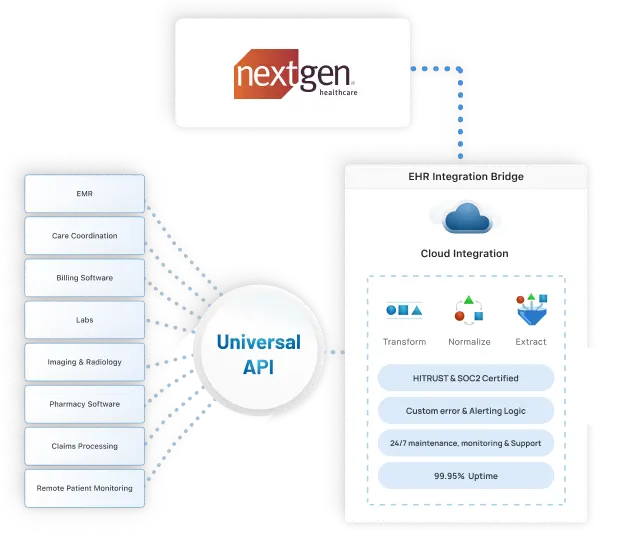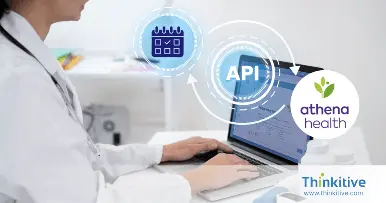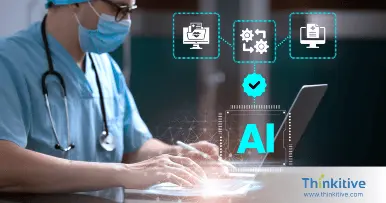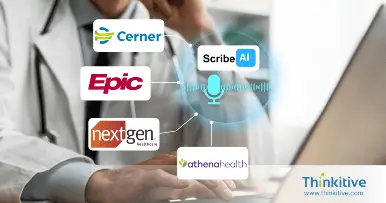NEXTGEN EHR INTEGRATION
Why Do You Need NextGen EHR Integration for Your Practice?
Harness the power of NextGen EHR integration to supercharge your team's performance. You'll eliminate data silos, maximize interoperability, and instantly automate routine tasks for unprecedented efficiency.
Unified Systems
Unify disconnected systems across the globe for connected care delivery
3 Countries
Process Efficiency
Eliminate manual data entry to improve efficiency
75% More Efficient Process
Proven ROI
Practices reported revenue boosts through automation and integration
40% Revenue Increase
CUSTOM NEXTGEN EHR INTEGRATION SERVICES
Our End-to-End NextGen Integration Services
Empower your healthcare applications to exchange data effortlessly and securely through our fully customized NextGen EHR integration solutions.
NextGen EHR Integration Consultation
- Define integration objectives & workflows
- Evaluate data elements & use cases
- Access NextGen documentation & resources
- Collaborate with NextGen integration team
- Plan, implement, and test solution
Access to NextGen Sandbox & Production Environments
- Coordinate with NextGen integration team
- Gain sandbox environment access
- Test integration without affecting production
- Deploy solution in production environment
- Monitor integration post go-live
NextGen Integration Services
- NextGen FHIR/API integration
- Mirth Connect middleware solutions
- Interface & custom middleware integration
- HL7, CCD, C-CDA standards compliance
- Secure, interoperable data exchange
Let’s Get Started With Your NextGen EHR Integration?
Get started by accessing your system and let’s start your digital transformation journey into a connected healthcare ecosystem.
NextGen EHR INTEGRATION BENEFITS
Before & After NextGen EHR Integration
NEXTGEN EHR INTEGRATION SOLUTIONS
How we Integrate Your Healthcare System with NextGen
1. FHIR & API Integration Connects Your Healthcare Systems with NextGen
NextGen APIs allow healthcare professionals to securely access specific sections of a patient’s medical record, streamline data-sharing, and reduce barriers for staff and providers. This improves operational efficiency and enhances clinical workflows.
We provide end-to-end FHIR and API integration services, connecting your healthcare platform to NextGen EHR with fully customizable solutions that adhere to compliance standards. Integration options include API-based, HL7, App Orchard, data synchronization, messaging protocols, and middleware solutions to suit your unique requirements.
NextGen provides three types of FHIR API resources:
2. Custom EHR Integration Bridge Enables NextGen Integration
NextGen offers multiple interfaces acting as middleware to enable smooth and secure NextGen healthcare data exchange between platforms and its EHR. Our team develops these interfaces to create reliable, scalable, and secure integration solutions.
Key interfaces we implement include:
3. Mirth Connects Your Practices with NextGen
Mirth Connect is an open-source integration engine that enables secure, scalable, and bi-directional healthcare data exchange. It facilitates data transformation, mapping, calculation, and conversion between formats such as HL7, XML, JSON, and more.
Mirth supports multiple communication protocols including TCP/IP, HTTP/S, FTP, and SMTP, ensuring reliable and accurate data transfer. Built-in validation, auditing, and logging features help track transactions, identify errors, and maintain data integrity.
With SSL/TLS encryption and industry-standard security practices, Mirth ensures sensitive healthcare data remains protected during transmission. Its scalable architecture and custom scripting capabilities allow integration across large volumes of data while adapting to complex workflow requirements.

See How Can Custom NextGen EMR
Integration Pay for Itself?
NextGen EHR INTEGRATION PROCESS
Custom NextGen EHR Integration Process
Process
Requirement Analysis
Identify integration goals, workflows, and data exchange needs to align NextGen EHR with your healthcare operations.
Evaluate Integration Capabilities
Assess NextGen APIs, FHIR resources, and middleware options to determine the most effective integration approach.
Design & Develop Integration Interface
Architect and build NectGen custom interfaces or middleware for secure, scalable, and compliant NextGen connectivity.
Build & Test
Implement integration components and rigorously test for accuracy, performance, and regulatory compliance.
Go Live
Deploy the integration in production, monitor performance, and ensure seamless, uninterrupted workflows.
Let’s Integrate Your NextGen EHR Integration
Get your first free consultation and uncover how custom NextGen EHR integration can change your practice.
Case studies
Sneak-Peek into Our Successful Custom NextGen EMR Integration Projects
Explore how our tailored NextGen EMR integrations have streamlined workflows, improved data exchange, and enhanced clinical efficiency for healthcare organizations.
CUSTOM NextGen INTEGRATION PLANS
Hire NextGen EHR Integration Experts
Choose an engagement model that suits your specific NextGen EHR integration needs and ideally fits your budget. We have a flexible model that accommodates according to your needs.
Time & Material Model
Ideal for evolving requirements. Pay only for completed work as project scope and milestones adjust dynamically throughout development.
Hire Dedicated Team
Best for extending your in-house team with skilled remote professionals. Choose resources, interview or trial them, and pay hourly based on utilization.
Fixed Price Model
Suitable for projects with a clearly defined, unchanging scope. Fixed cost and timeline. Best recommended for smaller, well-documented projects.

Why Thinkitive is The Best NextGen EHR Integration Company for You?
![]() Tailored to your Needs
Tailored to your Needs
Thinkitive’s first step to developing ... customizable EHR software is to understand your unique needs and requirements. Based on that, our development team develops a customized software solution to meet your requirements and solve your problems.
![]() Ready-to-use Components
Ready-to-use Components
With our ready-to-use technology ...components like video conferencing, appointment, scheduling, and SOAP notes, fasten your custom EMR software development process.
![]() Third-Party Integration
Third-Party Integration
Integrate your EHR software with ... multiple third-party systems like Telemedicine, RPM Devices, Labs, Radiology, etc., to build a complete virtual healthcare ecosystem.
![]() Affordable EHR Solutions
Affordable EHR Solutions
With our ready-to-use base EHR ...software framework, we give you an affordable custom EHR software solution specifically designed for your healthcare practice.
![]() In-Depth Domain Expertise
In-Depth Domain Expertise
With our ready-to-use base EHR ...software framework, we give you an affordable custom EMR software solution specifically designed for your healthcare practice.
![]() Timely Delivery
Timely Delivery
We have curated an EHR system ...development process that covers all the aspects of your healthcare practice’s unique needs and requirements with transparency for on-time delivery.



